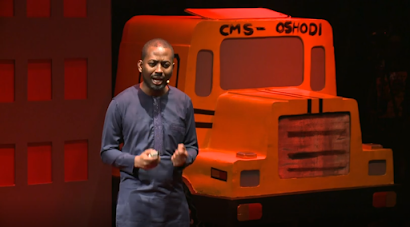Brooklyn’s Best or Another Chance to Save?
A movie that baseball fans and political activists alike could
agree with and couldn’t wait to see when it hit the box office; 42 offered this opportunity and was a
largely successful movie due to its appeal to many different audiences. Although
this movie seemed like a great way to show the overcoming of many social norms
of racism and bigotry during Jackie Robinson’s tenure as a Brooklyn Dodger, it
took more of a stance that had traits of the “White Savior” trope with Branch
Rickey’s involvement in making Jackie Robinson the first African American
baseball player in Major League Baseball. Instead of focusing on celebrating the
accomplishments that Jackie Robinson achieved during his MLB career, the movie
took a more left of center approach according the Giannetti’s definition,
challenging the aspects of racism in the 1940s and 50s while also showing
Branch Rickey as the “White Savior” of the film.
An easy
way of being able to identify 42 as a
movie that is left of center is by the willingness to showcase the racism and
hatred for African Americans during a time of historic success of Americas
favorite pastime. A good indication of this is when the Dodgers visitCincinnati for a road series (link NSFW). As the Dodgers take the field, there
is a slight boo as the team, minus Robinson, run out to their positions. A young
boy is talking with his father in what seems to be a peaceful and loving
conversation. Once Robinson takes the field, however, the dad goes from a respectful
human being to someone who deserves no respect from anyone. Almost like a light
switch, hateful and derogatory racial slurs pour out of his mouth as if there’s
no sense of right or wrong. The son, pressured by the mob mentality of every
fan giving their own opinion of hate to Robinson, joins in by repeating exactly
what his father had before. This idea that parents have a huge influence on
their children and how they will act towards others is still a current problem
that needs to be addressed further and I think the producers of the movie did a
great job in addressing this.
Another
way that racism is overtly addressed as something that was a major problem is,
once again, set in Cincinnati. The manager of the Reds, Ben Chapman, had harassedRobinson all game (NSFW) and would not give him any sort of chance to think for
a second that he was going to be respected in the majors. Calling him every
name in the book, Robinson stood there and took the insults one by one in each
at-bat. There is a shining of hope, however, as white teammate Eddie Stanky stands up for Jackie and confronts
Chapman. Immediately following on the next pitch, Robinson gets a base hit, his
first of the evening. I believe this is the producers way of showing that when
others stand in solidarity with those who are oppressed, good things can happen,
and the bad guy will lose the battle.
The
last way that this movie takes a stance that is more left of center is its
willingness to shine light on the “White Savior” effect. Branch Rickey was the
president of the Dodgers organization and decided that he would be the one who
would break the color barrier in sports. Throughout the movie he has numerous talks
with Robinson, always instructing him to keep a calm head and never to act out
of rage towards those that offend him. He talks with Robinson with a tough love
demeanor and seems to always have Robinson’s back whenever danger comes. Although
he does not receive the same screen time that Robinson does in the movie, he
does receive a substantial amount of it and his willingness to be the person
that does break the color barrier is evident in the beginning of the movie. I do
not think that Branch Rickey acted out as someone who intended to be the white
savior in history; I think his intentions were pure and he was a visionary of
his time. He truly did see African Americans as people and what he did for the
game of baseball should be marked down in history.
42 was a movie that attracted a large
audience and was successful in being a movie that not only praised the
accomplishments of an athlete that opened the door for African Americans to
pursue their own goals of becoming a professional athlete, but also showed the
many different hardships that African Americans had to deal with on a daily
basis in their personal lives. I believe that Giannetti would agree that the
movie took a more left of center approach, challenging the aspects of racism in
the 1940s and 50s while also showing Branch Rickey as the “White Savior” of the
film.



Comments
Post a Comment